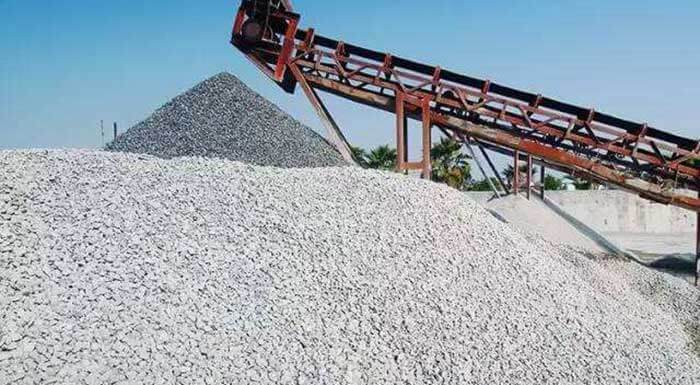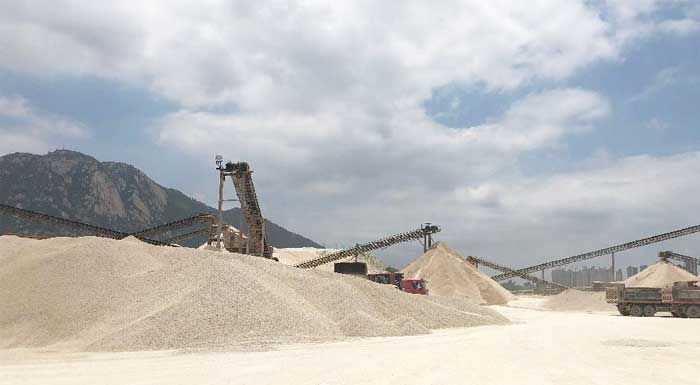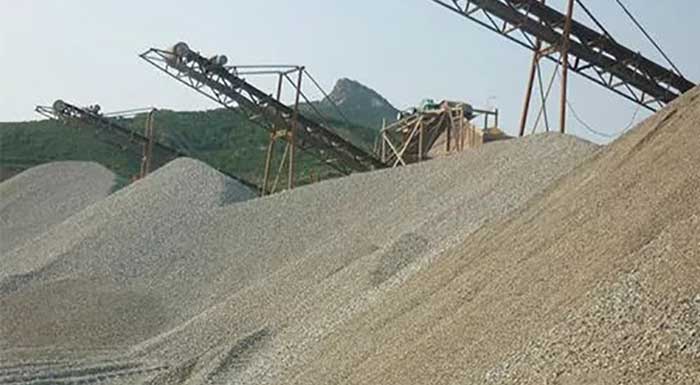| Aggregate | granular loose material that plays the role of skeleton, filling and volume stabilization in concrete. According to the particle size, it can be divided into coarse aggregate and fine aggregate. |
| High Performance Concrete | The concrete is made by selecting high-quality conventional raw materials, adding admixtures and mineral admixtures reasonably, using a lower water cement ratio and optimizing the mix proportion, and having excellent mixing performance, mechanical performance, long-term performance, and durability. |
| Coarse Aggregate | rock particles larger than 4.75mm, including pebbles and crushed stone: |
| Pebble | rock particles > 4.75mm formed by natural weathering, water transportation, sorting and accumulation. |
| Crushed Stone | rock particles > 4.75mm made from rock, pebble and tailings without chemical treatment by desoiling, crushing, shaping, screening, powder control and other processes. |
| Fine Aggregate | rocks and particles with particle size < 4.75mm. Including natural sand and artificial sand. |
| Irregular Particle in Coarse Aggregate | Pebble and crushed stone particles are particles with an average particle size less than 0.5 times the corresponding particle size. |
| Natural Sand | rock particles < 4.75mm formed naturally, mined and screened manually include river sand, Lake sand, mountain sand and desalinated sea sand |
| Artificial Sand | Including machine-made sand and mixed sand. |
| Machine-Made Sand | rock particles < 4.75mm made from rock, pebble and tailings without chemical treatment by desoiling, crushing, shaping, screening, powder control and other processes. |
| Mixed Sand | sand formed by mixing natural sand and machine-made sand in proportion |
| Crushed Stone | Rock particles with a nominal particle size greater than 5.00mm obtained by crushing and screening natural rocks or pebbles. |
| Flaky Particle in Artificial Sand | Artificial sand particles with a particle size of 1.18mm or more have a one-dimensional size smaller than the average particle size of 0.45 times the corresponding particle size. |
| Fineness Module | An indicator for measuring the fineness of sand. |
| Dust Content | The nominal particle size in the aggregate is less than 80 μ The content of m particles, including clay, silt, and fine particles. |
| Clay lump Content in Sands | The content of particles with a nominal particle size greater than 1.25mm in sand that have been washed and pinched by hand to become particles smaller than 0.63mm. |
| Clay lump Content in Stones | The content of particles with a nominal particle size greater than 5.00mm in the stone that have been washed and pinched by hand to become particles smaller than 2.50mm. |
| Crusher Dust Content | The nominal particle size of artificial sand is less than 0.08mm, and its mineral composition has the same particle content as the processed parent rock. |
| Methylene Blue Value | An indicator used to determine the adsorption performance of particles with a particle size less than 0.08mm in artificial sand. |
| Apparent Density | The mass per unit volume of aggregate particles (including enclosed pores). |
| Tight Density | The mass per unit volume of aggregate after being compacted according to the prescribed method. |
| Bulk Density | The mass per unit volume of aggregate in a naturally accumulated state. |
| Soundness | The ability of aggregates to resist cracking under natural weathering or other physical and chemical factors. |
| Light Material | Substances with an apparent density of less than 2000kg/m3 in sand. |
| Elongated Particle | Any rock particle with a length greater than 2.4 times the average particle size of the particle size is considered a needle shaped particle. |
| Flaky Particles | A particle with a thickness less than 0.4 times the average particle size is considered a sheet-like particle. The average particle size refers to the average value of the upper and lower particle sizes of the particle size. |
| Crushing Value Index | The ability of artificial sand, gravel, or pebbles to resist crushing. |
| Alkali Aggregate Reaction | The chemical reaction between alkali in hardened concrete and alkali active minerals in aggregates occurs slowly in humid environments, leading to concrete expansion, cracking, and even damage. |
| Alkali Active Aggregate in Orthopedics | Aggregates that can react chemically with alkalis in concrete under certain conditions, causing expansion, cracking, and even damage to the concrete. |
| Alkali Silica Reactive Aggregate | Aggregates containing amorphous or incompletely crystalline silica that may undergo alkali aggregate reactions under appropriate conditions. |
| Alkali Carbonate Reactive Aggregate | Microcrystalline dolomite containing specific structural structures may produce aggregates that undergo alkali aggregate reactions under appropriate conditions. |
| Fluidity Ratio of Rock Fines (FF) | The ratio of the flowability of the sand mixed with stone powder to the reference cement sand under the conditions of adding additives and a water cement ratio of 0.4 is used as an indicator to determine the adsorption performance of stone powder on water reducing agents. |
| Water Requirement of Artificial Sand (X) | The ratio of water consumption between artificial sand and ISO standard sand under the specified deviation of cement mortar flowability is used to comprehensively determine the indicators of artificial sand gradation, particle type, water absorption rate, and stone powder adsorption performance. |

 What Is Aggregate And How Many Types of Aggregates?
What Is Aggregate And How Many Types of Aggregates? Concrete Sand | How To Select Suitable Sand For Concrete
Concrete Sand | How To Select Suitable Sand For Concrete Why Desert Sand Cannot be Used As Building Materials
Why Desert Sand Cannot be Used As Building Materials How About Artificial Sand Compared With Natural Sand
How About Artificial Sand Compared With Natural Sand



